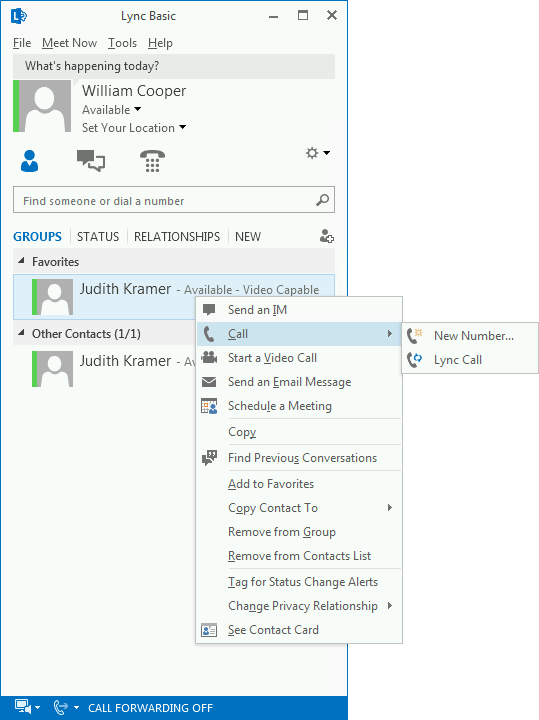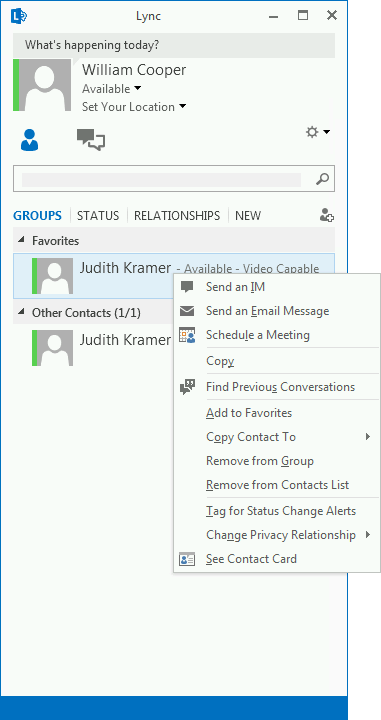Issue with the Lync Basic 2013 Client and A/V Disabled
Update 2/26/14 - This issue has been resolved with the release of Service Pack 1 for Office 2013. You can get more information here.
I ran across this while testing an issue a reader of my blog posted in the comments of an article I wrote about the Lync Basic 2013 client. They had mentioned that when a user using the Lync Basic 2013 client was set to A/V disabled the options for A/V were still presented in the client. In my testing I found this to be true and in fact the options were not only presented to the user, but A/V wasn't blocked if the user tried to initiate an A/V call to another user. For my testing I was using version 15.0.4420.1017 of the Lync Basic 2013 client. You can see in the screen shot below that even though the user is set to A/V disabled in Lync, the Phone tab and the Call Forwarding options still appear and the user is actually in a call with another user:
In addition, the options for starting an A/V call with another user are available:
Also, when looking at the A/V disabled user's presence from another client, you can see that they show as "Video Capable", even though they should be disabled for video:
If you compare this to the same user signed into the Lync 2013 client, you can see that the Phone tab and the Call Forwarding options are removed, as expected:
Also, the options for initiating an A/V call are removed as well:
So how does the Lync client know what features to make available when the user signs in? The answer is through information received by the client via in-band provisioning. The Lync client sends out a SIP SUBSCRIBE requesting provisioning information:
SUBSCRIBE sip:wcooper@test.deitterick.com SIP/2.0
...
Content-Type: application/vnd-microsoft-roaming-self+xml
The response is a SIP/2.0 200 OK and contained in the response is the setting we're interested in:
<telephonyMode>NoAudioVideo</telephonyMode>
The telephonyMode setting can contain a couple of different values, depending on what the user is configured for:
- NoAudioVideo = Audio/Video Disabled
- None = PC-to-PC only
- Rcc = Remote Call Control
- Rcc Only = Remote Call Control only
- UC = Enterprise Voice
It appears that currently the Lync Basic 2013 client is ignoring this setting and is allowing the user to initiate A/V sessions whether the user is enabled to do so or not.




